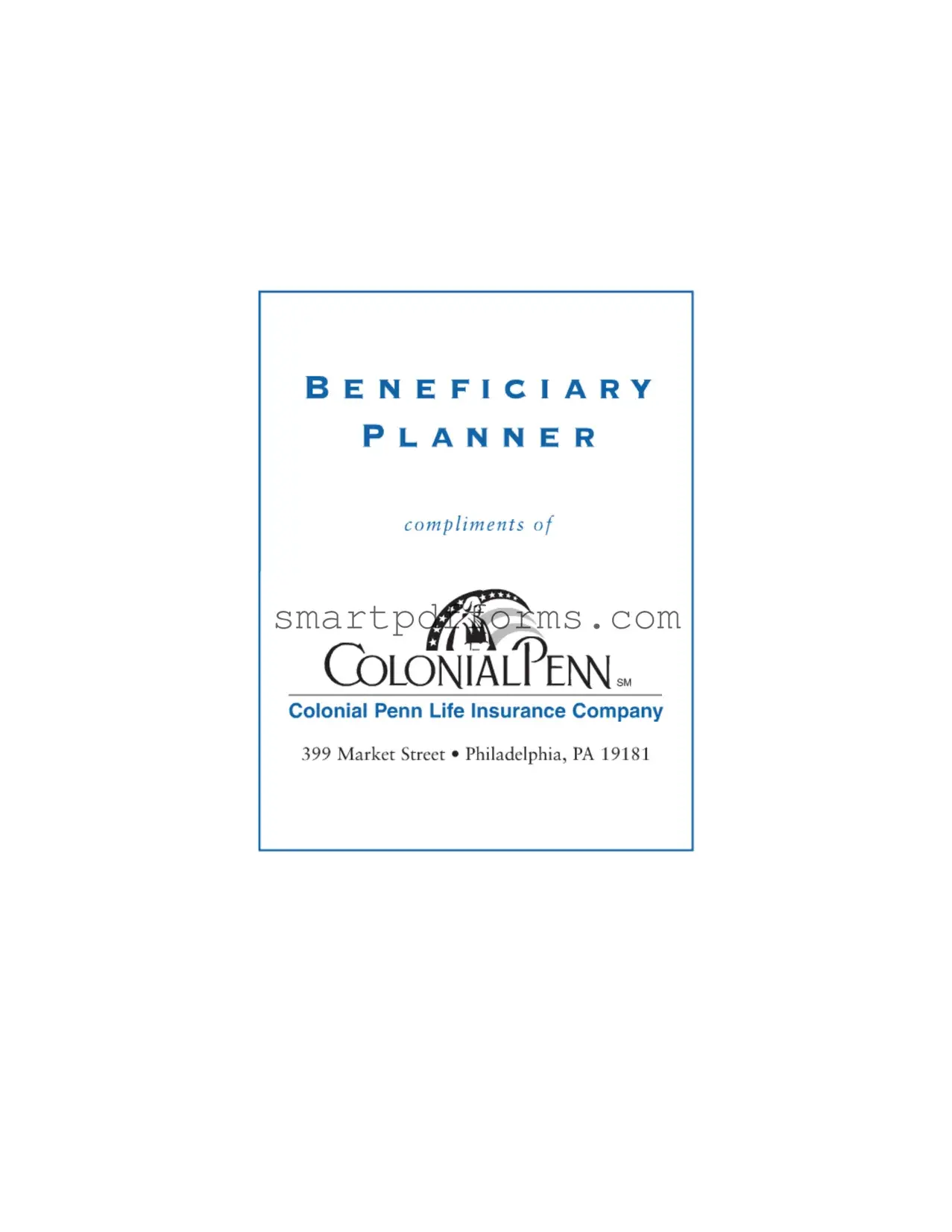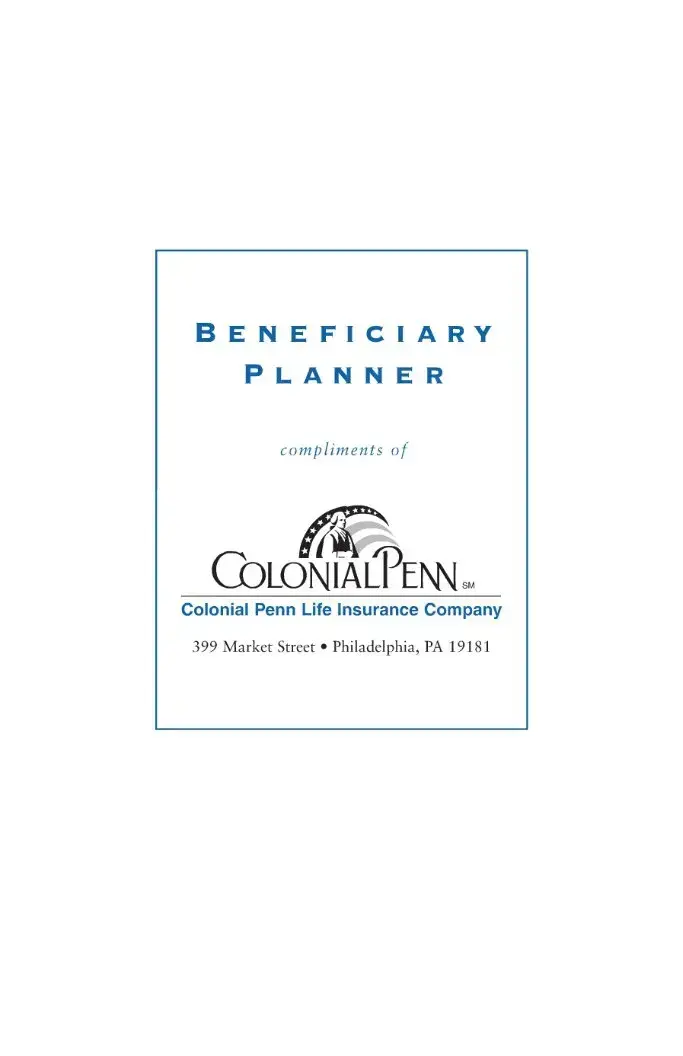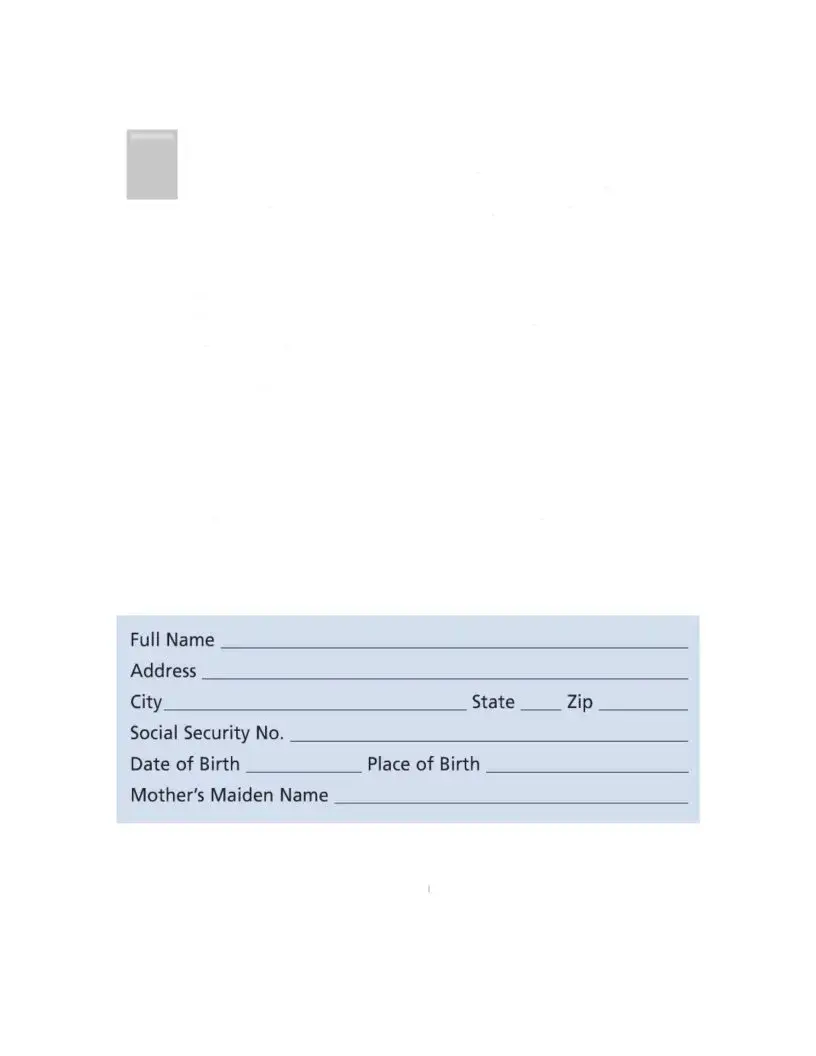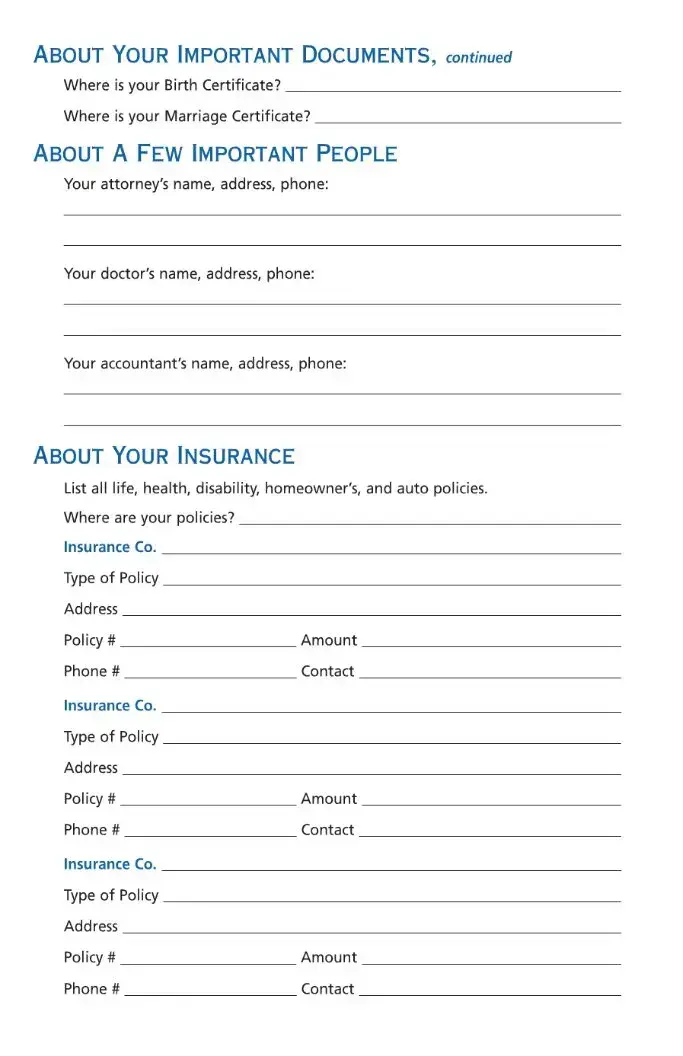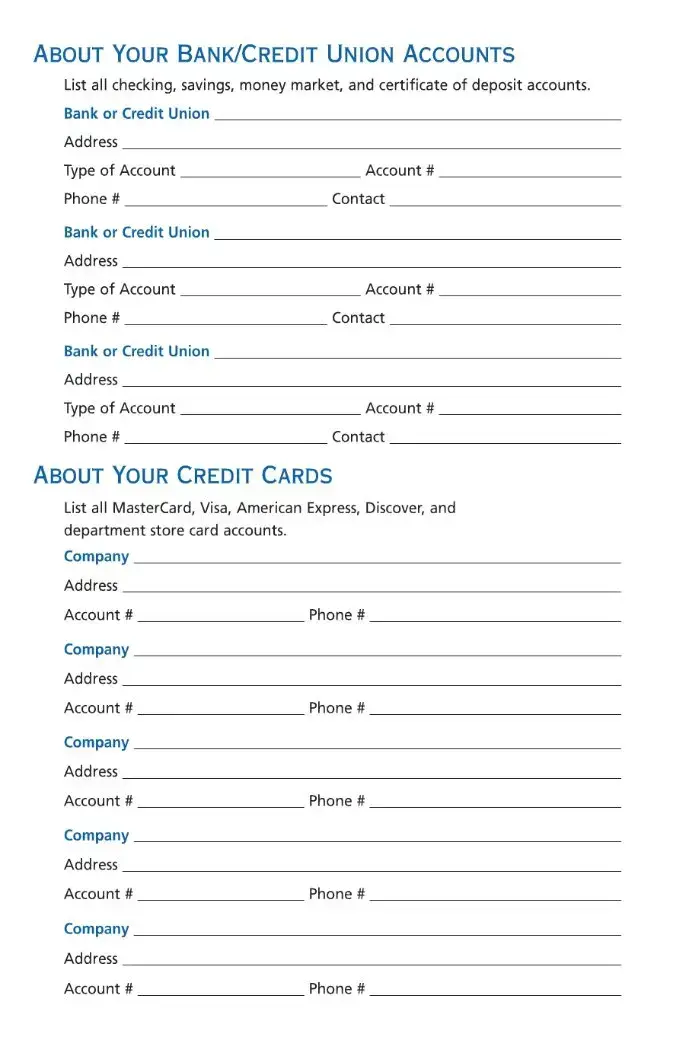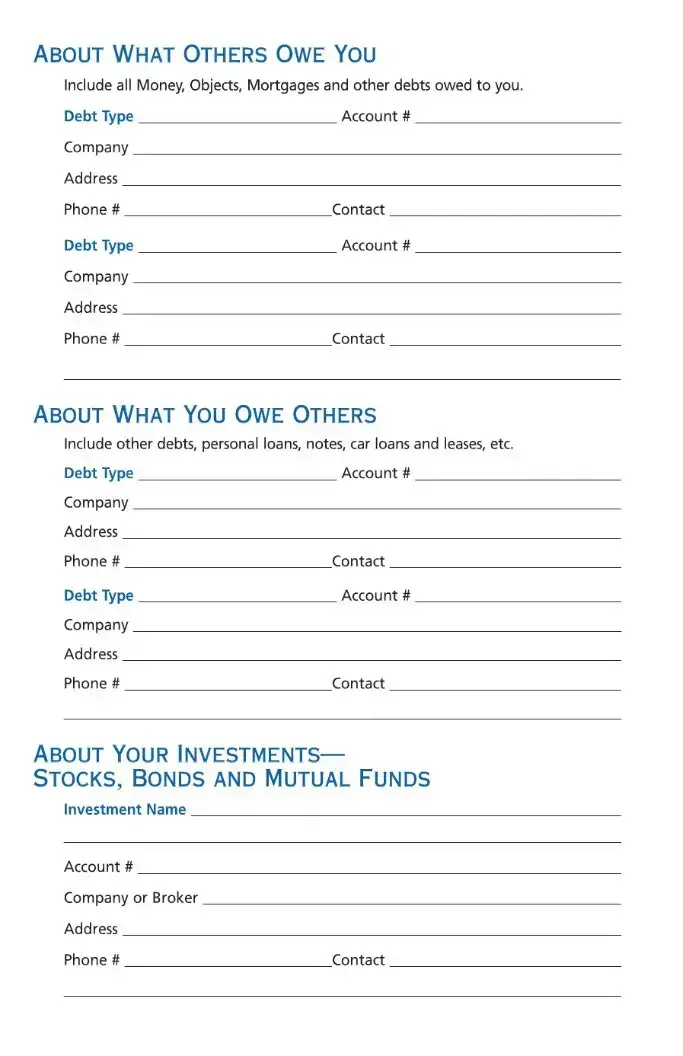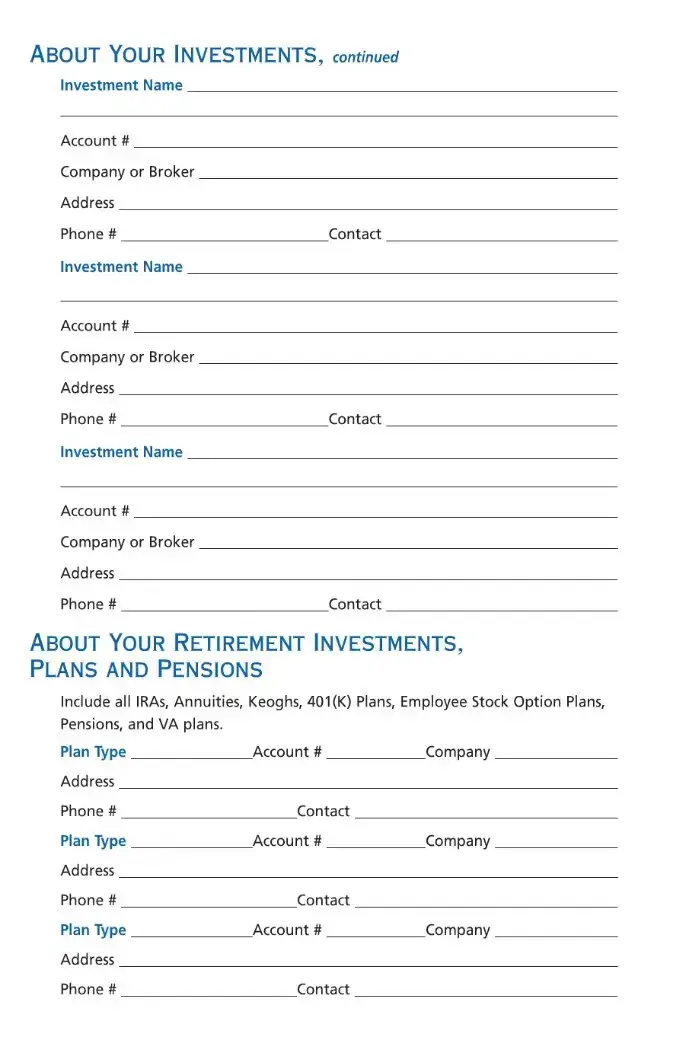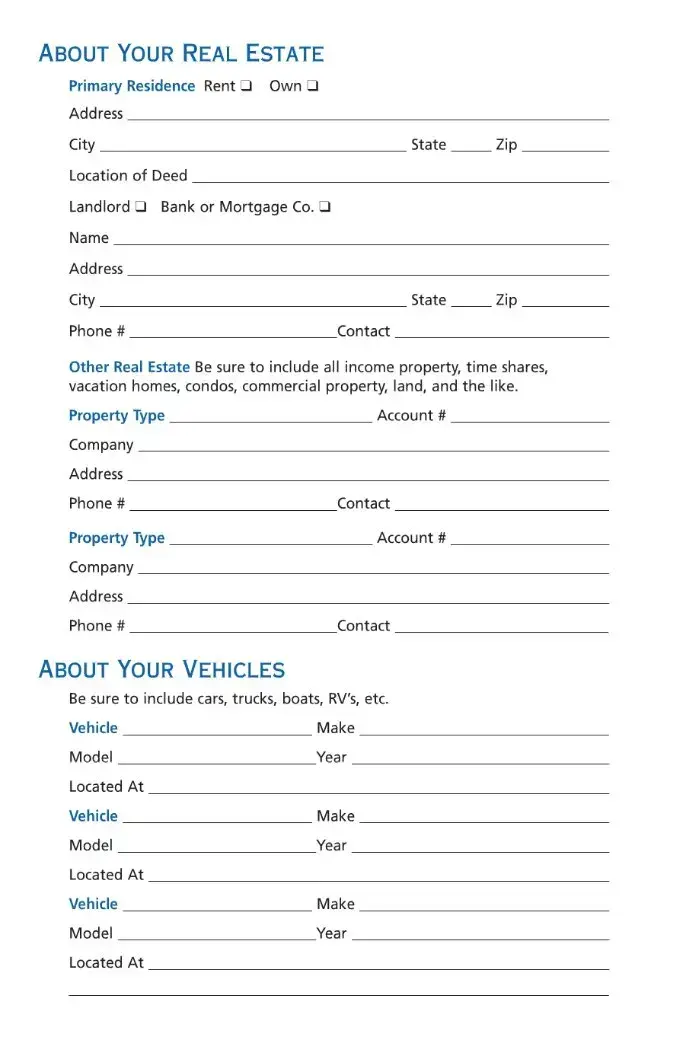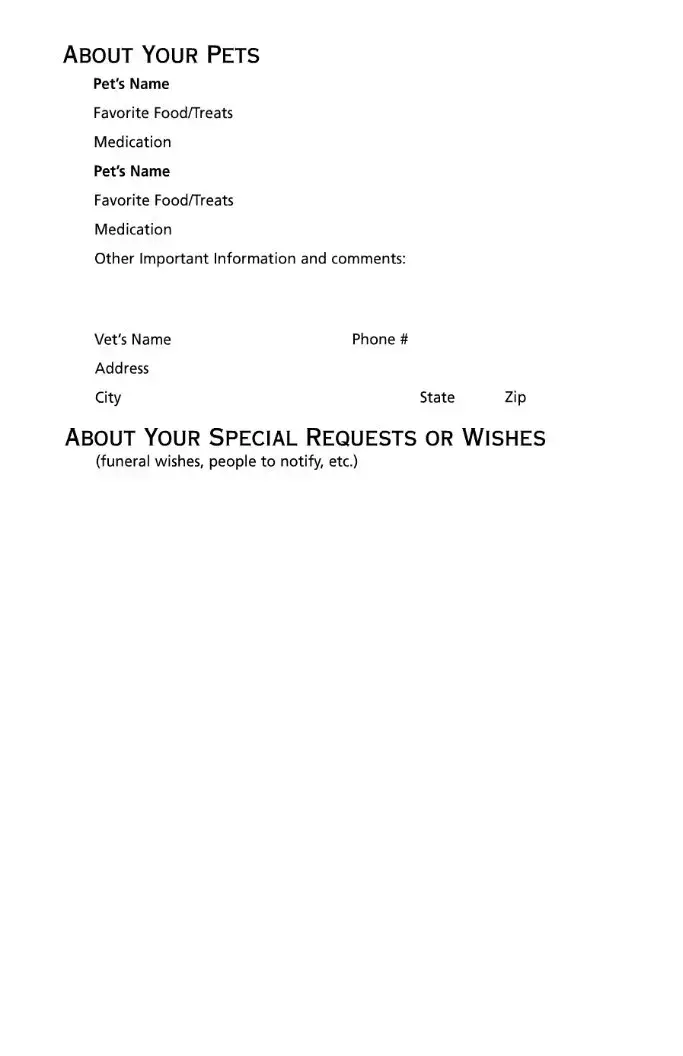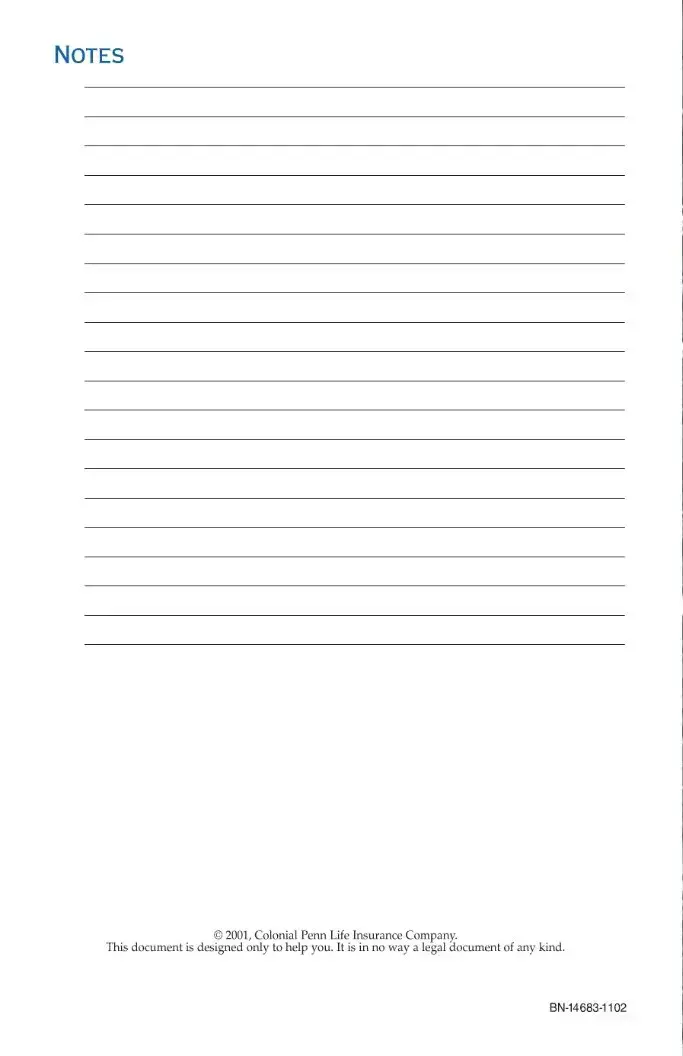Blank Beneficiary Planner PDF Template
The Beneficiary Planner form is a comprehensive tool provided by Colonial Penn Life Insurance Company, aimed at assisting policyholders in organizing and communicating posthumous wishes and essential information to family members or friends. Designed to simplify the process of detailing where important documents are kept, what tasks need attention, which bills require payment, or accounts that need to be cancelled, it serves as a valuable resource in planning for the unforeseen. By investing time now to fill out and share this planner, you can ensure that your loved ones are informed and prepared for the future.
For a streamlined approach to safeguarding your wishes and easing the responsibility on your loved ones, click the button below to start completing your Beneficiary Planner form today.
